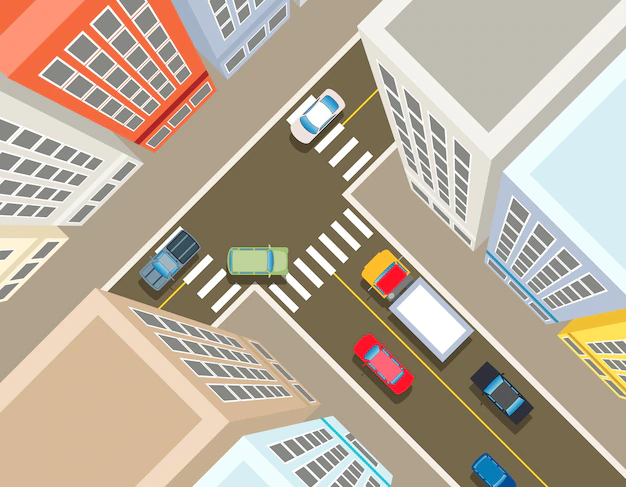Even as far back as “Town Mouse and the Country Mouse,” the natural and urban worlds have been conceptualized and shown as opposites ever since. However, a more in-depth understanding of how economies and ecosystems function indicates this is untrue.
According to a study published by the World Economic Forum earlier this year, cities and the natural world’s prosperity are inexorably intertwined. This connection cannot be severed. The loss of environment and biodiversity harms over half of the world’s cities’ gross domestic product (GDP). However, towns that consciously invest in natural areas might offer themselves an economic benefit.
According to the dominant worldview, urbanization and ecological sustainability go together as naturally as oil and water.
This blog demonstrates that there is no need for this always to be the case. There are several ways in which nature may support the growth of urban areas. We can foster circumstances favorable to the well-being of people, the Earth, and the economy in urban areas if we acknowledge that cities are living systems.
Although they only occupy 1% of the ice-free territory on Earth, cities need an area that is 36 times larger than that to provide food for its residents. In addition, they are responsible for more than 75 percent of the world’s emissions of greenhouse gases.
The city and the Country
Up to this point, the expansion of urban areas has occurred almost entirely at the cost of the natural environment. Throughout history, cities have been constructed near vital ecosystems that provide the towns with critical resources, such as soil and water, at the price of the health of the cities themselves; this trend is expected to continue: It is anticipated that 90 % of the cities located in the world’s biodiversity hotspots would spread into the wet tropical woods. Although they only occupy 1% of the ice-free territory on Earth, cities need an area that is 36 times larger than that to provide food for its residents. In addition, they are responsible for more than 75 percent of the world’s emissions of greenhouse gases.
On the other hand, it is not possible to abolish the practice of living in cities. Municipalities are responsible for producing 80% of the global GDP and are home to 56% of the world’s population. There will be an extra 1.1 billion people living in urban areas by the year 2030; by the year 2050, metropolitan areas will be home to three out of every four individuals.
In addition, the existing interaction that cities have with the natural environment poses a hazard to the inhabitants of those cities and the cities themselves. The IPBES Global Assessment Report indicates that there are 18 primary ways in which biodiversity ensures the continued existence of humans.
It is essential to producing essential goods such as energy, food, and medicine, and it helps maintain critical economic activities like air quality, water cycles, and flood management.
These contributions are vital to maintaining the economics and societies of all of the world’s cities, even though various cities throughout the globe occupy diverse ecosystems. Critical economic operations dependent on nature are in danger of being disrupted due to the loss of biodiversity.
As a result, the loss of nature puts at risk 44% of urban GDP in 2019, equal to $31 trillion.
This is because of the threat of disruption in various industries, including supply chains and transportation, energy and utilities, retail and consumer products, aviation and travel, and information technology.
The effects of climate catastrophe and other environmental shifts will also be felt in cities; they will not be immune to them. More than seventy percent of the world’s 576 biggest cities, or 414 in total, are under tremendous or severe danger as a result of pollution, issues with water supply, excessive heat, or other natural catastrophes.
The current state of affairs indicates that cities pose a danger to the natural world; nevertheless, the natural world is positioned to take cities down with it. Loss of ecosystems such as mangroves, which serve as a buffer between the growing human population and the rising sea level, is the primary cause of concern for more than 1,600 cities. This concern is growing due to the fact that flooding is becoming more probable. The second most significant risk to urban areas is drought; presently, one in every four metropolitan regions is experiencing water stress.

Biodiverse Cities
‘Nature-positive’ investments, such as Nature-based Solutions for infrastructure or restoring land to nature, can produce more than $1.5 trillion in annual economic value by the year 2030 and create more than 59 million jobs in urban areas throughout the globe.
According to the research findings, investing 583 billion dollars in initiatives that improve nature and limit the consequences of cities on biodiversity may gain large economic rewards as cities become more resilient, liveable, and competitive.
The protection of urban watersheds, the preservation or restoration of coastal wetlands, and the incorporation of natural into constructed environments are all examples of nature-based solutions. For instance, San Francisco and Cordoba in Spain have enacted rules requiring any building with a roof area of at least 400 square meters (about 4,306 square feet) to cultivate a green roof.
Freetown, Sierra Leone, is the subject of another case study. In 2017, the city was submerged by three days’ worth of rain, which caused a landslide that resulted in the deaths of more than one thousand people and displaced more than three thousand others. As a response, the city constructed earthworks and planted 21,000 trees that were natural to the area to stabilize the slope. In addition to encouraging public engagement in this transformational vision, the city’s mayor launched a campaign called “Freetown the Freetown” to double the city’s tree cover by the end of 2022. The movement was accompanied by an application known as “Treetracker,” which monitors the development of the campaign on a tree-by-tree basis.
According to the World Economic Forum, transforming a metropolitan region into biodiversity requires three significant paradigm shifts:
It is taking a “systems approach” to urban governance. This entails making choices that consider the requirements of the natural world and the requirements of all human populations impacted by those choices, as opposed to simply doing what is cheapest to solve immediate issues.
Incorporating natural elements into the design of cities involves conserving already existing habitats and incorporating aspects of nature into the design of cities, such as green roofs and tree corridors, to create cities more in tune with their natural surroundings.
Making green cities attractive to investors by standardizing biodiversity data that can be used to guide investments and creating new markets to make investing in nature less risky To make green cities attractive to investors, it is necessary to standardize biodiversity data that can be used to guide investments.
Cities of the Future
IPCC Working Group III Vice-Chair Diana Ürge-Vorsatz told reporters that cities could make a difference by improving urban planning, promoting sustainable production and consumption of consumer goods, electrifying the grid, and encouraging carbon storage through nature-based solutions such as green roofs, tree planting, and urban lakes. A press conference was held to announce the findings of the report.
She said that there is a tremendous possibility for lowering emissions.
Both stories come when cities are trying to figure out how to recover from the coronavirus epidemic. This has led to some imaginative proposals, such as Barcelona’s plan to transform 21 streets into pedestrian green spaces, which would total 20 kilometers, according to a report by Reuters.
According to Mauricio Rodas, co-chair of the Global Commission on BiodiverCities by 2030 and former mayor of Quito, Ecuador, who was quoted in a press release issued by the World Economic Forum, “As cities think about building for the post-pandemic future, they have a priority to provide their citizens with a more equitable and prosperous quality of life by protecting their natural resources.” Rodas made this statement.
- About the Author
- Latest Posts
A passionate advocate for all natural and sustainable ideas. With a background in sustainable economics science and a deep love for nature, Sojy has dedicated his career to promoting eco-friendly practices and encouraging others to live a more sustainable lifestyle. He is an avid hiker, gardener, and cook, and loves experimenting with natural ingredients in his recipes and lifestyle routines. Sojy believes that small changes can make a big impact and is constantly seeking out new ways to reduce his carbon footprint and inspire others to do the same



